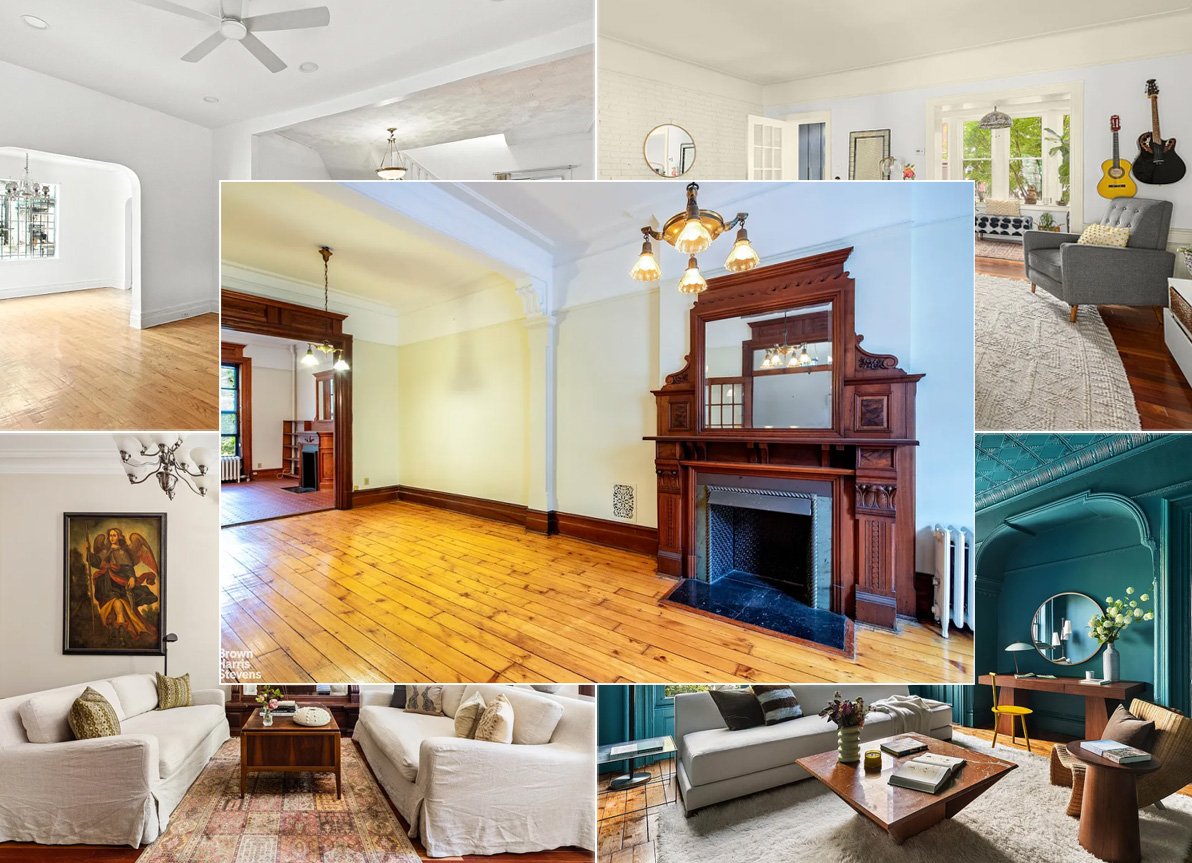Building of the Day: 5403-5411 Sixth Avenue
Brooklyn, one building at a time. Name: Row houses Address: 5403-5411 Sixth Avenue Cross Streets: 54th and 55th Street Neighborhood: Sunset Park Year Built: 1903 Architectural Style: Romanesque Revival Architect: Pohlmann & Patrick Other works by architect: Many other houses and flats buildings in Sunset Park, as well as in Park Slope and other Brooklyn…


Brooklyn, one building at a time.
Name: Row houses
Address: 5403-5411 Sixth Avenue
Cross Streets: 54th and 55th Street
Neighborhood: Sunset Park
Year Built: 1903
Architectural Style: Romanesque Revival
Architect: Pohlmann & Patrick
Other works by architect: Many other houses and flats buildings in Sunset Park, as well as in Park Slope and other Brooklyn brownstone neighborhoods
Landmarked: No, but within a proposed Sunset Park HD. Sunset Park is on the National Register of Historic Places (1988)
The story: Sunset Park was designed as the working man’s neighborhood. Its developers and planners knew their market – hard working children of immigrants, mostly, who wanted homes near their jobs at the new Bush Terminal and the other industry along the bay, as well as in the nearby factories of Gowanus. They had their architects build blocks upon blocks of modest, but beautiful row houses, most of which were two family, so that a family could live in the lower duplex and rent out the apartment above for extra income, or house extended family. Mixed in with the two family houses were many larger flats buildings and low-rise apartment buildings, giving people even more options for living in what would be Brooklyn’s last predominantly row house neighborhood.
Perhaps because of Sunset Park’s location, out beyond Green-Wood Cemetery, or its relative isolation, with only the R train for much of its length, the neighborhood remained pretty much intact for the last hundred years. But as the need for housing and a Wild West attitude towards development takes its toll, a lack of landmarking protection is making it possible for the neighborhood’s handsome streets to start to look more and more like this.
This group of four two-story brownstones was built in 1903. The architects were Pohlmann and Patrick, one of the more prolific architects in the neighborhood. They designed this group of four to be a self-contained unit on the block, with the “A” houses hugging the interior pair. P & P used brownstone, but the designs are pure Renaissance Revival, a style that is almost exclusively in lighter colored limestone. Most of the later row house building in Brooklyn was either limestone or Colonial Revival brick, so the use of the dark brownstone here was an interesting throw back to the “old” Brooklyn, and the wealthier neighborhoods of nearby Park Slope and Brooklyn Heights.
And all was well, until the early 21st century. From the permits and the date on the Property Shark photo, it looks like somewhere around 2004 to 2007; the owners of 5409 gutted out the basement level and put in this laundromat, which had its grand opening in 2007. That was bad enough, but in 2010, the owner of 5405 (numbering skips 5407) filed for a permit to do work. His permit read “VERTICAL AND HORIZONTAL EXTENSION OF AN EXISTING BUILDING OBTAIN NEW COF O.”
This was a tear down, not a “vertical and horizontal extension” of anything. This vague verbiage has been used over and over in all kinds of neighborhoods to not only excuse inappropriate buildings like this, but to avoid paying extra for building a new building. It cheats not only the neighborhood, but the city, and should be illegal. It’s bad enough when infill housing is built with no regard to the aesthetics of the neighborhood, or the buildings around it, but to tear down a quarter of a beautiful group of buildings to build this is really just wrong.
Sunset Park’s homeowners are now exploring landmarking. The neighborhood is on the National Register, but that doesn’t mean much when it comes to development. It has no teeth. What National Register status does give is an opportunity for a building owner to take a hefty Federal and State tax credit for major work done on a NR property. Yeah, you have to fill out a lot of paperwork, and it’s only worth it if you are doing large projects, but it’s there, and it’s something. Who doesn’t want a hefty 40% tax credit on major work done? Our historic neighborhoods can be preserved, and development can still continue. There is room for both. This building is not development, it’s a mess. That’s my opinion, and I’m sticking with it. GMAP
(Photo:Lynn Massimo)








If the lower duplexes are original, were the bedrooms on the ground floor or the parlor level?
Can we have a new feature “Bizarre Brownstone Alterations of the Day”, set mostly in Borough Park?
Landmark this neighborhood!